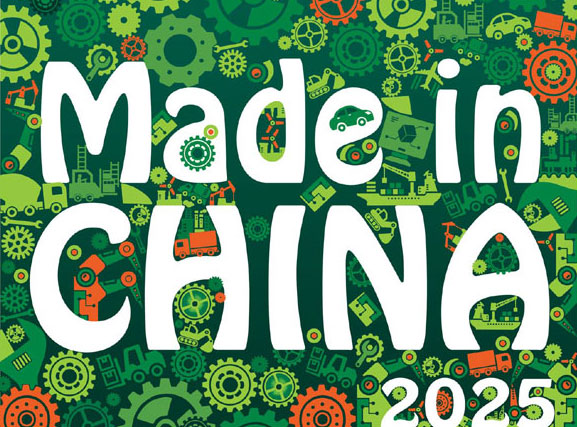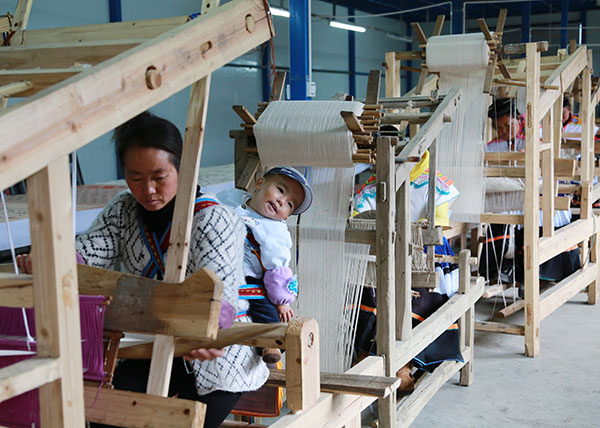Bringing it all back home
Updated: 2015-12-04 07:57
By Li Yang and Yang Jun(China Daily)
|
|||||||||||
Legal obligations
"Grassroots governments in places like Bijie need to compile files on every poor family, and take customer-tailored measures to help every household find a way out of poverty. A local civil servant should be responsible for every poor family in Guizhou," he said. "Local governments must fulfill their legal obligations to care for people who are losing the ability to take care of themselves, and allow easier access to basic social services."
Since the late 1970s, more than 700 million people in China have been lifted out of poverty, making the country the first developing economy to meet the UN's Millennium Development Goal of halving the number of people living in poverty by 2015.
Instead of using public funds to directly support poorer regions, the central government urged local governments in places such as Bijie to attract investors to labor-intensive industries such as agriculture and tourism that provide a good fit with local conditions and create large numbers of jobs closer to people's homes.
While he welcomed the moves, Huang Chun, director of Bijie's poverty-alleviation department, said local authorities should help the needy to obtain loans from local banks so they can develop business ideas, such as agricultural and ethnic artwork cooperatives and tourist-oriented family inns and restaurants.
"There are 450,000 poor families in Bijie at present. Our experience shows that it costs about 10,000 yuan to lift one family out of poverty, provided the money is invested in sustainable programs, such as raising pigs, sheep and chicken. That means we will need 4.5 billion yuan," Huang said. "The government has to turn to banks, intergovernmental and social organizations, and also attract funds from private individuals and enterprises to overcome the funding shortfall."
In 2009, Zhang Xianglun, a resident of Hetaozhai village in Bijie, used subsidized loans to buy and raise egg-laying hens, and now makes a net profit of 300,000 yuan ($47,000) a year. He employs about 20 villagers to take care of the henhouses, and is considering increasing the number of broiler chickens, which are mainly used to provide meat.
"The government provided me with loan guarantees and an interest subsidy as well as technical support," Zhang said. "If not for that support, I would never have had the opportunity to start the business from zero."
In 2002, the Revolutionary Committee of the Chinese Kuomintang, a political advisory party, provided 20 million yuan to help Hetaozhai's residents transform their thatched houses into brick-and-tile dwellings, build 416 storage areas known as "water cellars", along with asphalt roads and a village primary school.
Yuan Hejun, the village head, said greater reliance on private enterprise could turn fortunes around: "There are still 190 left-behind children in the village. I hope more and more villagers can start their own businesses, like Zhang Xianglun, so the children and their parents can live together as families."
Shen Yuhan, one of the 16 teachers at the village school, monitors the children's conditions. "I visit the home for left-behind children at least once a month, to check on the living conditions and learn about the difficulties the children are experiencing in their lives. I then report my findings to the village committee," she said.
There are more than 440 students at the school, and nearly half of them are left-behind and live with their grandparents, many of whom were among the first-generation of migrant workers in the 1990s.
Today's Top News
10 major programs to boost China-Africa co-op
Putin sees positive trends in Russia's economy
Russian and Turkish finance ministers hold talks
Xi in South Africa to boost China-Africa cooperation
SOEs face headwinds as 21% witness profits decline
President Xi arrives at South Africa for state visit
China ready for risks after yuan included in SDR
Premier League coaches to aid China's soccer goal
Hot Topics
Lunar probe , China growth forecasts, Emission rules get tougher, China seen through 'colored lens', International board,
Editor's Picks

|

|

|

|

|

|







